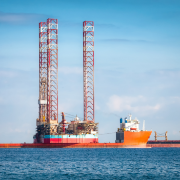As global temperatures continue to rise due to climate change, cities around the world face an increasing risk of water shortages. This challenge is particularly acute in urban areas, where high population densities and industrial activities amplify the demand for water. To ensure sustainable water management, cities must adopt a comprehensive approach that includes both innovative technologies and robust policies. This article explores various strategies that cities can implement to manage water shortages effectively, illustrated by examples from around the globe.
Understanding the Impact of Climate Change on Urban Water Supplies
Climate change impacts water resources through altered precipitation patterns, increased evaporation rates, and more frequent and severe droughts. These changes can lead to reduced water availability in reservoirs, rivers, and aquifers, which are the primary sources of water for many cities. Furthermore, rising temperatures exacerbate the situation by increasing water demand for cooling, irrigation, and consumption.
Strategies for Managing Water Shortages
- Enhancing Water Efficiency
Improving water use efficiency is a crucial first step in managing water shortages. Cities can implement various measures to reduce water consumption in households, industries, and agriculture.- Residential Water Efficiency: Encouraging the use of water-efficient appliances and fixtures, such as low-flow showerheads, dual-flush toilets, and efficient washing machines, can significantly reduce household water consumption. Public awareness campaigns and incentives can further promote water-saving behaviors.
- Industrial Water Efficiency: Industries can adopt water-saving technologies and practices, such as recycling and reusing process water. Implementing water audits and monitoring systems can help identify inefficiencies and areas for improvement.
- Agricultural Water Efficiency: Although agriculture is often less relevant in urban settings, peri-urban agriculture can benefit from efficient irrigation techniques like drip irrigation and the use of drought-resistant crop varieties.
- Example: Melbourne, Australia, has successfully reduced its per capita water consumption through a combination of public awareness campaigns, water-efficient appliances, and stringent water restrictions during drought periods.
- Diversifying Water Sources
Relying on a single water source makes cities vulnerable to shortages. Diversifying water sources can enhance resilience and ensure a stable supply.- Desalination: Coastal cities can invest in desalination plants to convert seawater into potable water. Although energy-intensive, advancements in technology are making desalination more cost-effective and environmentally friendly.
- Recycled Water: Treating and reusing wastewater for non-potable purposes, such as irrigation, industrial processes, and toilet flushing, can reduce the demand on freshwater supplies. Advanced treatment processes can also make recycled water safe for potable use.
- Rainwater Harvesting: Collecting and storing rainwater from rooftops and other surfaces can provide a supplementary water source, especially during the rainy season.
- Example: Singapore has developed a diversified water supply strategy known as the “Four National Taps,” which includes local catchment water, imported water, NEWater (high-grade reclaimed water), and desalinated water. This approach has made Singapore highly resilient to water shortages.
- Improving Infrastructure and Reducing Water Losses
Aging and inefficient water infrastructure can lead to significant water losses through leaks and inefficiencies. Upgrading and maintaining water infrastructure is essential for ensuring a reliable supply.- Leak Detection and Repair: Implementing regular leak detection programs and promptly repairing identified leaks can prevent water losses. Advanced technologies, such as smart water meters and acoustic sensors, can help detect leaks early.
- Efficient Water Distribution Systems: Modernizing water distribution systems to reduce pressure variations and optimize flow can enhance efficiency and reduce losses.
- Green Infrastructure: Integrating green infrastructure, such as permeable pavements, green roofs, and urban wetlands, can help manage stormwater, reduce runoff, and recharge groundwater supplies.
- Example: Los Angeles, USA, has invested heavily in upgrading its water infrastructure, including the installation of smart meters and the implementation of an extensive leak detection program. These efforts have significantly reduced water losses and improved water management.
- Enhancing Water Storage Capacity
Increasing water storage capacity can help cities manage supply variability and ensure availability during dry periods.- Reservoirs and Dams: Building new reservoirs and expanding existing ones can increase water storage capacity. However, this approach must be balanced with environmental considerations and potential impacts on local ecosystems.
- Aquifer Recharge: Artificially recharging groundwater aquifers through techniques such as managed aquifer recharge (MAR) can provide a sustainable water storage option. This involves directing excess surface water or treated wastewater into aquifers for future use.
- Example: The city of Perth, Australia, has successfully implemented an aquifer recharge program that uses treated wastewater to replenish groundwater supplies. This initiative has enhanced the city’s water security and reduced reliance on surface water sources.
- Implementing Water Pricing and Incentives
Economic instruments can play a crucial role in promoting water conservation and efficient use.- Tiered Water Pricing: Implementing tiered pricing structures, where higher water usage is charged at a higher rate, can encourage conservation. This approach ensures that essential water use remains affordable while discouraging wasteful practices.
- Incentives for Conservation: Providing financial incentives, such as rebates for water-efficient appliances and subsidies for rainwater harvesting systems, can motivate individuals and businesses to adopt water-saving measures.
- Example: In Israel, tiered water pricing has been effective in reducing water consumption and promoting efficiency. The country also offers incentives for adopting water-saving technologies, further enhancing its water management efforts.
- Promoting Community Engagement and Education
Community involvement and education are essential for fostering a culture of water conservation and ensuring the success of water management initiatives.- Public Awareness Campaigns: Educating the public about the importance of water conservation and the steps they can take to reduce water use can drive behavioral change. Campaigns can utilize various media channels, including social media, to reach a broad audience.
- Stakeholder Engagement: Involving stakeholders, such as local communities, businesses, and non-governmental organizations, in water management planning and decision-making processes can ensure that diverse perspectives are considered and that initiatives gain public support.
- Example: Cape Town, South Africa, faced a severe water crisis in 2017-2018. The city launched an extensive public awareness campaign to encourage water-saving behaviors, which, combined with strict water restrictions, helped avert the crisis and significantly reduced water consumption.
Conclusion
Managing the risk of water shortages in cities amidst rising temperatures due to climate change requires a multifaceted approach. By enhancing water efficiency, diversifying water sources, improving infrastructure, increasing storage capacity, implementing economic instruments, and promoting community engagement, cities can build resilience against water scarcity. The examples from Melbourne, Singapore, Los Angeles, Perth, and Cape Town illustrate that with the right strategies and commitment, urban areas can successfully navigate the challenges posed by climate change and ensure a sustainable water future.













